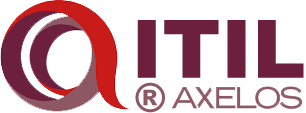
How to use Facebook Ads for small business
Method 1: Use a form on your site
The 'traditional' method for gathering information from potential customers is to set up a Facebook Ads campaign that leads people to an optimised page.
This can be a landing page on your site or a page built on a specific service such as ActiveCampaign, HubSpot and so on.
The main advantage of this method is that you can communicate a lot about your product or service on the landing page compared to the native Facebook form. As a result, the contact that will arrive via this type of campaign will be of a higher quality than the campaigns we will see in method 2.
The disadvantage is that Facebook does not look favourably on users leaving its platform, mainly because the longer people stay on social, the more advertising they see, the more Facebook increases its turnover.
Method 2: Use the native Facebook Ads form
Introduced by Facebook in 2015, Lead Generation campaigns are a unique way to collect data without having to build a form on a webpage.
Facebook Ads Lead Generation is an advertising campaign provided by the social network to collect contacts for your business.
Thanks to this advertising function, which corresponds to the objective 'Lead Generation', you can create a campaign to generate contacts directly from Facebook, without diverting users to an external landing page or your own website.
This feature is really effective because it allows you to create a campaign already optimised for lead generation very quickly and without the costs of designing a dedicated landing page.
This is really a great advantage for all those companies that need to collect data, such as e-mails or phone calls from users interested in their products or services. All this while being able to precisely target the target audience.
Thus, this Facebook functionality allows you to obtain contacts at a relatively low cost.
It will be sufficient to generate a contact form implementing all the information we want to acquire from users.
There is no need for specific technological skills to create this system, which, for this reason, is also quicker to implement.
Another big advantage of this type of Facebook ad campaign is that the prospect can provide you with his information without leaving the platform. Furthermore, the form will usually be pre-filled with all the information that Facebook already knows about the user.
In terms of user experience, this is a 'low-friction' way of collecting data:
- you avoid destroying the user's browsing experience by making them go through your site;
- the contact does not have to re-type their information, because the form is pre-filled;
- people do not have to check their e-mails or junk mail folder for confirmation.
Especially on mobile devices, the native form provided by Facebook is a simple and elegant way to collect contacts. Remember that more than 80 per cent of people consult Facebook exclusively via smartphones.
Typically, the Facebook Lead Ads campaign is used towards cold, unsuspecting traffic. However, if you are promoting a new product, service or event, you can also generate leads from warm audiences.
Remember that to collect leads you must have a Privacy Policy on your site.
Integration with CRM system
Of course, you will be able to retrieve the data of these contacts. If you have CRM software, and don't tell me you don't, you can establish a link with Facebook, so that the CRM retrieves the lead information automatically. Otherwise, you can download the data in Excel format.
Of course, native Facebook forms also have disadvantages.
The ease of leaving data results in lower quality leads. You can overcome this drawback by adding fields that require manual input.
Furthermore, you do not have the space available for a real landing page. A landing page, in order to be persuasive, may need a certain structure, more depth and articulation. The native form of Facebook Lead Ads does not allow you to insert much explanatory text, only a short introduction.
